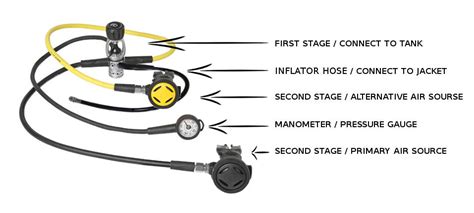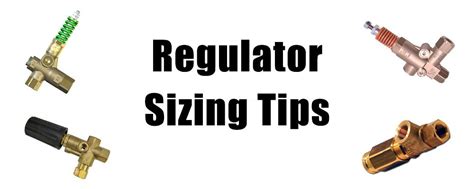What is a Voltage Regulator?
A voltage regulator is an electronic device that maintains a constant voltage level in a circuit, even when the load current or input voltage varies. The primary purpose of a voltage regulator is to provide a stable and reliable power supply for the components in a circuit, ensuring their proper operation and preventing damage from voltage fluctuations.
There are two main types of voltage regulators: switching regulators and linear regulators. Each type has its own unique characteristics, advantages, and disadvantages, which we will explore in the following sections.
Linear Voltage Regulators
How Linear Regulators Work
Linear voltage regulators work by using a variable resistor to control the output voltage. The regulator adjusts the resistance in series with the load to maintain a constant output voltage, even when the input voltage or load current changes. This is achieved by continuously comparing the output voltage to a fixed reference voltage and adjusting the resistance accordingly.
The basic components of a linear regulator include:
- A voltage reference: Provides a stable, fixed voltage to which the output voltage is compared.
- An error amplifier: Compares the output voltage to the reference voltage and generates an error signal proportional to the difference.
- A pass transistor: Acts as a variable resistor, controlled by the error amplifier to adjust the output voltage.
- Feedback resistors: Divide the output voltage and provide a portion of it to the error amplifier for comparison with the reference voltage.
Advantages of Linear Regulators
- Simplicity: Linear regulators have a simple design with fewer components, making them easier to understand, implement, and troubleshoot.
- Low noise: Linear regulators generate minimal electromagnetic interference (EMI) and output voltage ripple, making them suitable for noise-sensitive applications.
- Fast response time: Linear regulators can quickly respond to changes in load current or input voltage, providing a stable output voltage with minimal transient response.
- Low cost: Due to their simple design and fewer components, linear regulators are generally less expensive than switching regulators.
Disadvantages of Linear Regulators
- Low efficiency: Linear regulators dissipate excess power as heat, resulting in lower efficiency, especially when the difference between the input and output voltage is large.
- Limited power handling: The power dissipation limits of linear regulators restrict their use in high-power applications.
- Heat generation: As linear regulators dissipate excess power as heat, they may require heat sinks or other thermal management solutions, increasing size and cost.
- Limited input voltage range: Linear regulators typically require a minimum input-to-output voltage difference (dropout voltage) to function properly, limiting their input voltage range.

Switching Voltage Regulators
How Switching Regulators Work
Switching voltage regulators, also known as switch-mode power supplies (SMPS), use a different approach to regulate the output voltage. They rapidly switch a power transistor on and off to control the flow of energy from the input to the output. By varying the duty cycle (the ratio of on-time to off-time) of the switching transistor, the regulator can maintain a constant output voltage.
The basic components of a switching regulator include:
- A power switch: Typically a MOSFET or BJT transistor that rapidly turns on and off to control the flow of energy.
- An inductor: Stores energy during the on-time of the power switch and releases it to the load during the off-time.
- A diode: Provides a path for the inductor current to flow when the power switch is off.
- Output capacitor: Filters the output voltage and reduces ripple.
- Control circuitry: Monitors the output voltage and adjusts the duty cycle of the power switch to maintain a constant output voltage.
Switching regulators can be further classified into three main types:
- Buck (step-down) regulator: Outputs a lower voltage than the input voltage.
- Boost (step-up) regulator: Outputs a higher voltage than the input voltage.
- Buck-boost regulator: Can output a voltage that is either higher or lower than the input voltage.
Advantages of Switching Regulators
- High efficiency: Switching regulators can achieve efficiencies of up to 95%, as they dissipate less power as heat compared to linear regulators.
- Wide input voltage range: Switching regulators can operate with a wide range of input voltages, making them suitable for applications with varying power sources.
- High power handling: Switching regulators can efficiently handle higher power levels than linear regulators.
- Smaller size: Due to their high efficiency and reduced heat generation, switching regulators often require smaller heat sinks or no heat sinks at all, resulting in a more compact design.
Disadvantages of Switching Regulators
- Complexity: Switching regulators have a more complex design with additional components, making them more difficult to understand, implement, and troubleshoot compared to linear regulators.
- Higher noise: The rapid switching action of switching regulators generates electromagnetic interference (EMI) and output voltage ripple, which may require additional filtering.
- Slower response time: Switching regulators have a slower transient response compared to linear regulators, as the inductor and capacitor need time to charge and discharge.
- Higher cost: Due to their complex design and additional components, switching regulators are generally more expensive than linear regulators.

Regulator Comparison
To help you choose between switching and linear voltage regulators, let’s compare their key characteristics:
| Characteristic | Linear Regulator | Switching Regulator |
|---|---|---|
| Efficiency | Low | High |
| Noise | Low | High |
| Complexity | Simple | Complex |
| Power handling | Limited | High |
| Input voltage range | Limited | Wide |
| Size | Larger | Smaller |
| Cost | Lower | Higher |
| Response time | Fast | Slower |
When deciding between a switching and linear voltage regulator, consider the following factors:
- Efficiency requirements: If power efficiency is a top priority, a switching regulator is the better choice.
- Noise sensitivity: For noise-sensitive applications, a linear regulator may be preferred.
- Power handling: High-power applications will benefit from the efficiency and power handling capabilities of switching regulators.
- Input voltage range: If your application has a wide input voltage range, a switching regulator is more suitable.
- Size constraints: When space is limited, the smaller size of switching regulators can be advantageous.
- Cost: If cost is a primary concern, linear regulators are generally less expensive.
- Response time: Applications requiring fast transient response may benefit from the faster response time of linear regulators.

Application Examples
Battery-Powered Devices
In battery-powered devices, such as smartphones, tablets, and wearables, power efficiency is crucial to maximize battery life. Switching regulators are the preferred choice for these applications due to their high efficiency, which minimizes power losses and extends battery runtime. Additionally, the smaller size of switching regulators allows for more compact device designs.
Precision Measurement Equipment
For precision measurement equipment, such as lab instruments and medical devices, low noise and high accuracy are essential. Linear regulators are often used in these applications due to their low noise characteristics and fast response time. The stable output voltage provided by linear regulators ensures accurate measurements and reliable operation of sensitive components.
High-Power Motor Drives
In high-power motor drive applications, such as industrial automation and robotics, switching regulators are the best choice. The high efficiency and power handling capabilities of switching regulators allow them to efficiently supply the large currents required by motor drives. The wide input voltage range of switching regulators also makes them suitable for applications with varying power sources, such as battery-powered or generator-powered systems.
Audio Equipment
In audio equipment, such as preamplifiers and power amplifiers, low noise and high fidelity are critical. Linear regulators are commonly used in these applications to provide a clean and stable power supply for sensitive audio components. The low noise characteristics of linear regulators help minimize background noise and ensure high-quality audio reproduction.
FAQ
-
Q: Can I use a linear regulator and a switching regulator together in the same circuit?
A: Yes, it is possible to use both types of regulators in the same circuit. For example, you could use a switching regulator to efficiently step down a high input voltage to an intermediate voltage, and then use a linear regulator to further reduce the voltage and provide a low-noise output for sensitive components. -
Q: What is the dropout voltage of a linear regulator, and why is it important?
A: The dropout voltage is the minimum difference between the input and output voltage required for a linear regulator to maintain regulation. It is important because it determines the minimum input voltage required for the regulator to function properly. A lower dropout voltage allows the regulator to operate with a wider range of input voltages. -
Q: How do I reduce the electromagnetic interference (EMI) generated by a switching regulator?
A: To reduce EMI, you can use various techniques such as adding input and output filters, using shielded inductors, minimizing trace lengths, and properly grounding the circuit. Additionally, some switching regulators feature built-in EMI reduction techniques, such as spread-spectrum frequency modulation. -
Q: Can switching regulators be used in low-power applications?
A: Yes, switching regulators can be used in low-power applications. Many modern switching regulators are designed for low-power operation, with features such as low quiescent current and high efficiency at light loads. However, for ultra-low-power applications, linear regulators may still be preferred due to their simplicity and lower noise. -
Q: What is the difference between a synchronous and non-synchronous switching regulator?
A: A synchronous switching regulator uses a second power switch (usually a MOSFET) instead of a diode to provide a path for the inductor current during the off-time of the main power switch. This reduces power losses and improves efficiency compared to a non-synchronous regulator, which uses a diode. However, synchronous regulators are more complex and expensive than non-synchronous ones.
Conclusion
Choosing between a switching voltage regulator and a linear voltage regulator depends on the specific requirements of your power management circuit. Switching regulators offer high efficiency, wide input voltage range, and high power handling, making them suitable for applications where power efficiency and compact size are critical. Linear regulators, on the other hand, provide low noise, fast response time, and simplicity, making them ideal for noise-sensitive and low-power applications.
By understanding the working principles, advantages, and disadvantages of each type of regulator, you can make an informed decision based on your application’s needs. Consider factors such as efficiency, noise, power handling, input voltage range, size, cost, and response time when selecting the best regulator for your power management circuit.
Remember that in some cases, using a combination of switching and linear regulators can provide the benefits of both technologies, allowing you to optimize your power management solution for performance, efficiency, and reliability.

Leave a Reply